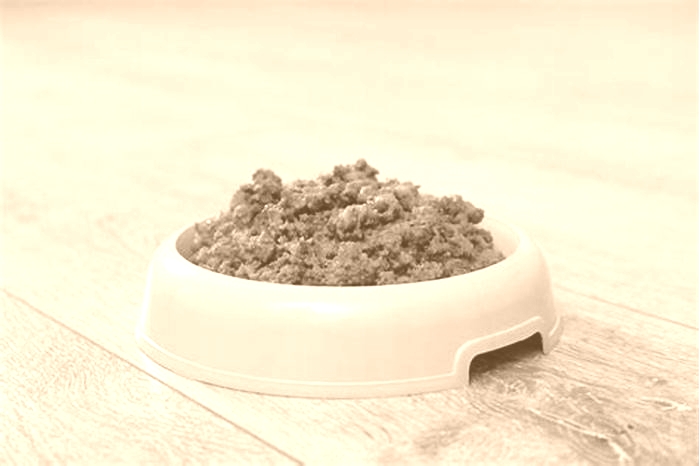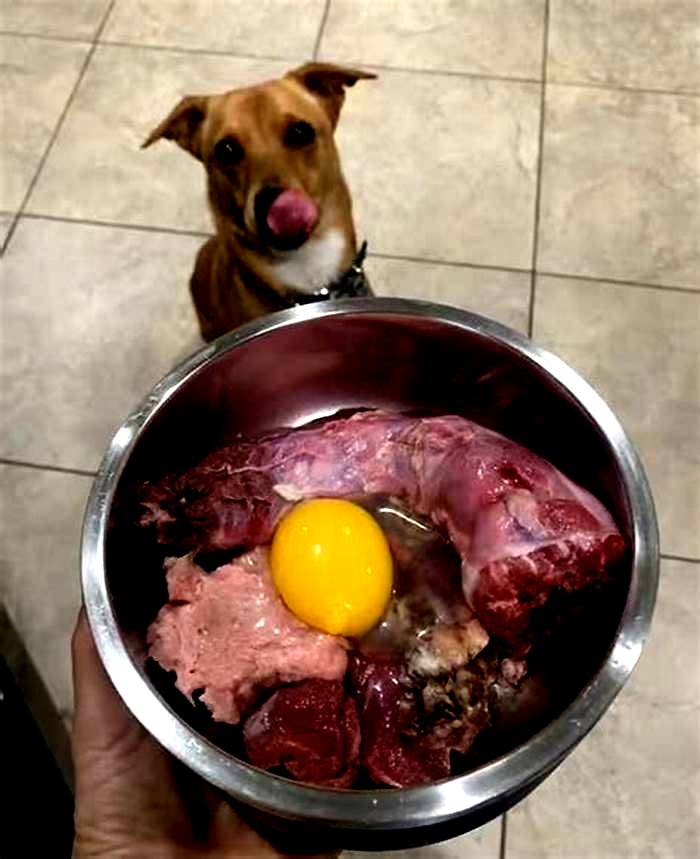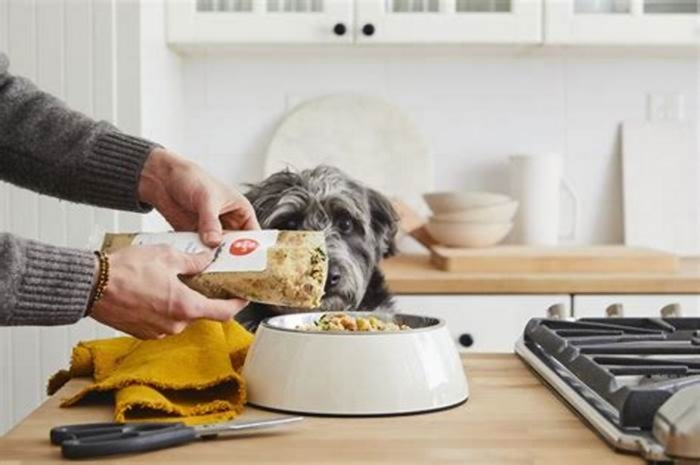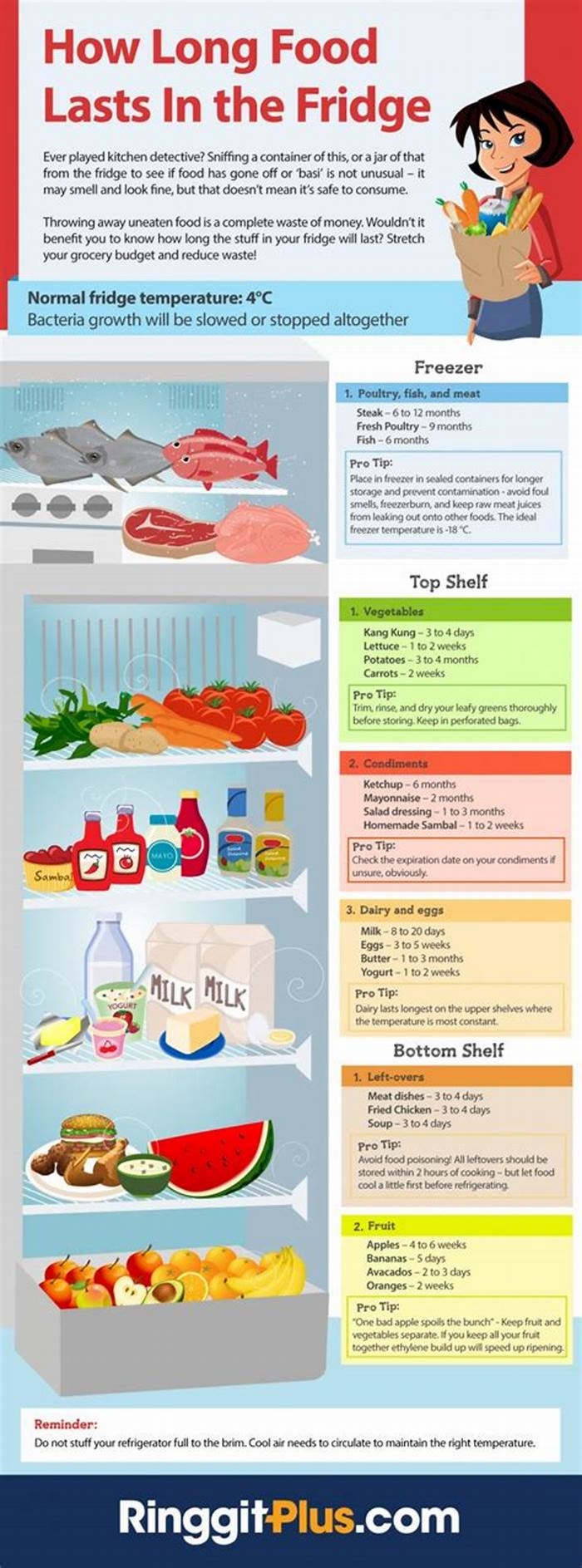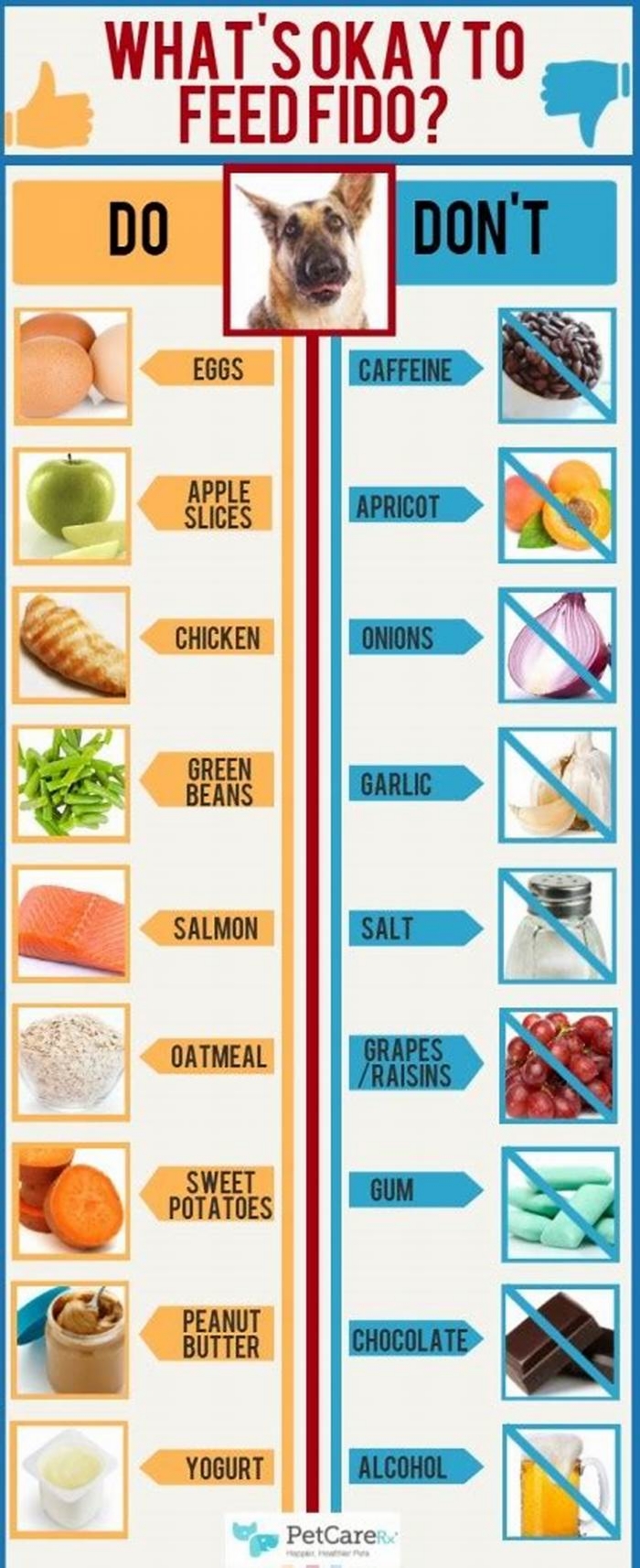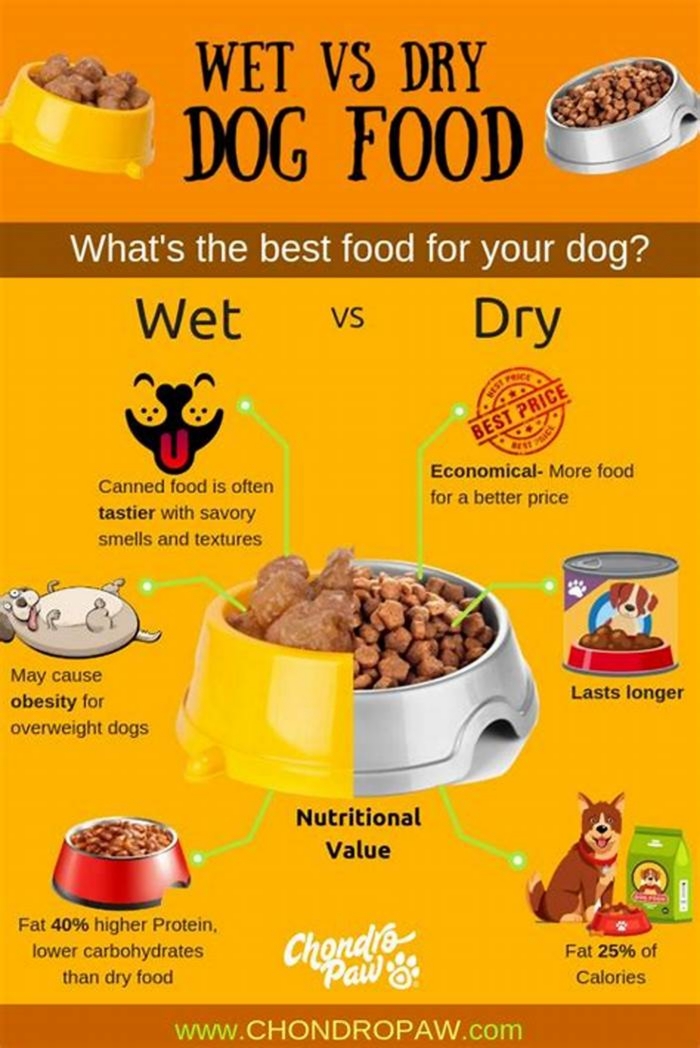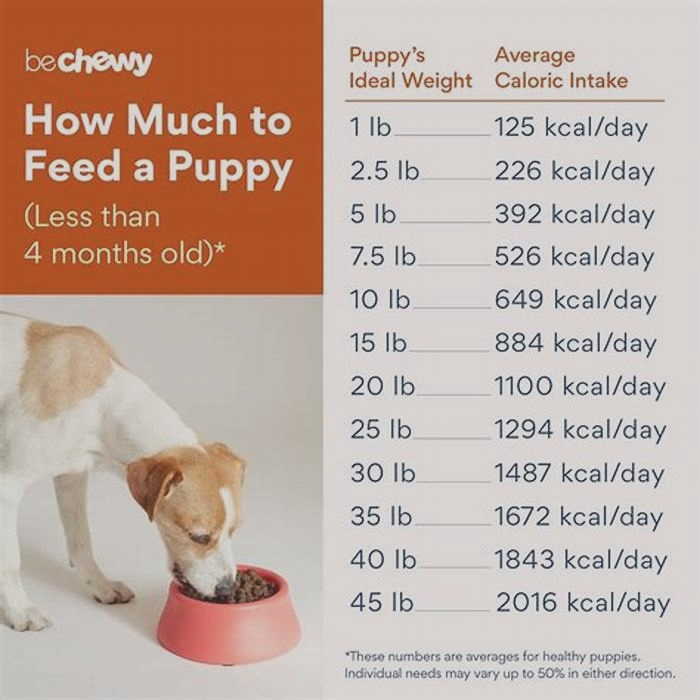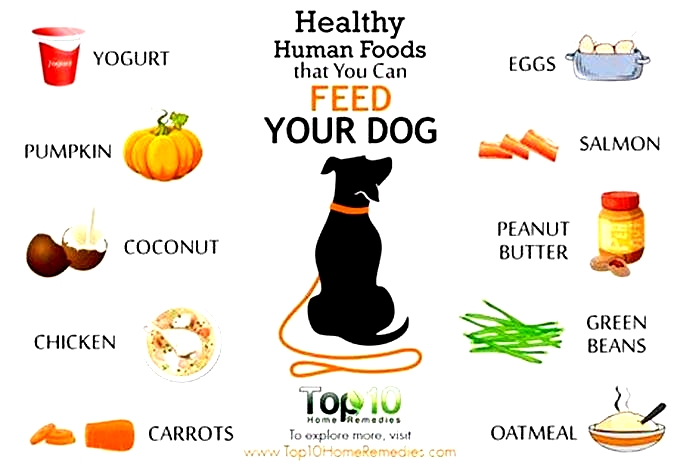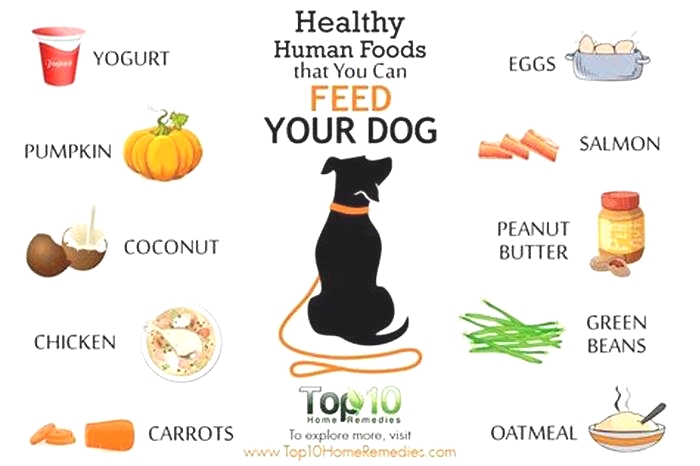Can you feed raw dog food straight from the fridge

Raw Dog Food: Preparation and Hygiene Guide!
Are you interested in transitioning your dog to a raw food diet? Or already feeding raw food, but facing foodborne illness? Well, no need to worry! Its normal to switch your furry pals diet to a totally raw food diet. Its just that you need to look after the raw dog food preparation and hygiene guidelines carefully. Follow them rigorously to avoid any foodborne illness, or spreading of bacteria.
As we know, the raw food for dogs demand is increasing day by day among pet parents. And its good to shift to raw food diet for dogs. But, on the other hand, its equally important to look after basic hygiene while preparing or storing raw food for your furry pal.
So, on the behalf of you, we have done some fruitful research work, and, jotted down the fundamental guidelines. Plus, also covered the facts, which will surely help you to understand the preparing and storing process. Also, help to avoid the spreading of bacteria all over the house.
Lets quickly dive in and explore the Raw Dog Food Guide
Fundamental Hygiene Guidelines to Handle Raw Dog Food
Nowadays, the demand of feeding raw food is increasing rapidly. As many pet parents want to provide fresh, and raw meat to their canine companions. But, unfortunately, improper handling of the raw food is leading to bacterial health issues or foodborne issues in your furry pal, and family.
For your reference, we have jotted down the seven fundamental hygiene guidelines to handle raw dog food. This will help you to feed correctly and reduces the risk associated with preparing raw foods, or bacteria-spreading issue.
1. Separate Food
One of the basic fundamental guidelines that need to follow is to separate the food carefully. In other words, keep raw meat, poultry, seafood, and eggs separate from other foods available in the house or fridge. This is because these raw foods contain pathogens, which can contaminate other food also, or spread the bacteria easily.
Sources like FoodSafety.gov, CDC, or USDA recommend place raw meat, poultry, and seafood in containers or sealed, leakproof plastic bags. Freeze them if youre not planning to use them within a few days.
Additionally, it will be much better if you use separate utensils, and a chopping board to prepare raw food for your canine companion. As it decreases the chances of spreading bacteria.
2. Only Wash Raw Vegetable and Fruits
Next, the important thing to keep in mind is that only wash raw vegetables, and fruits before cooking or storing them in the refrigerator. Some resources like USDA, and CDC stated that washing or rinsing meat or any other poultry item can increase the risk for cross-contamination in the kitchen, which can cause foodborne illness.
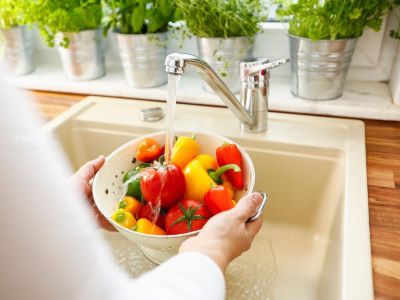
For instance, If you wash meat under the running tap, there are chances of bacteria splashing on hands, clothes, other utensils, food, surface area, etc It will lead to the spreading of harmful bacteria like campylobacter, or other bacterial diseases.
So, it is best to cook the raw meat thoroughly, in order to kill any bacteria present.
3. Separate the Spoiled Food
Well, yes, separating spoiled food from the bunch of raw food is essential, because it can easily spoil the other good raw food. So, before you keep the bunch for freezing, its better to check it twice and immediately remove the spoiled one.
In any case, if a spoiled one remains in the freezer, it will contaminate the other fresh food. By spreading bacteria and increases the risk of your canine companion getting affected by it. Once, the food is spoiled, then no matter how much hygiene steps you take, it will remain infected. And will lead to bacterial-related health issues for your canine companion.
Tip: If your dog refuses dry food after transitioning to a raw food diet, check out our tips for how to get a dog to eat dry food.
4. Freeze Raw Dog Food Until It Is Required
Freezing is one of the fundamental hygiene guidelines to handle raw food carefully. Yes, you heard it right, it is recommended to freeze the raw food until it is required. When thawing frozen food, keep one thing in mind: the thawing process will vary. This is because this one is for your canine companion. As your Fido is already equipped to handle more bacteria, it is useful to give them less or no contaminated raw food.
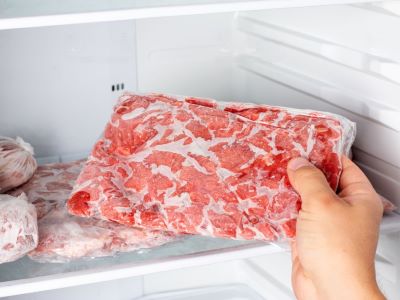
Further, it is suggested to take a bowl for thawing food for your canine companion. Do not let it settle down for a longer period. Once you are done, cook it at a safe temperature, and immediately serve it to your canine companion.
Heres advice for you, do not thaw food in hot, lukewarm water, or microwave because it increases the chances of contamination, and will lead to health issues for your dog. Consider your puppys age and breed when determining how much raw food to feed puppy per day.
5. Keep the Defrosted Raw Food in the Fridge
Once you have defrosted raw food, it is recommended to store it in a separate airtight container and place it in the fridge. In this way, you can prevent cross-contamination, and maintain freshness. In addition, CDC recommends storing raw food for human consumption is perfectly fine, and can be used in three-four days.
But, not recommended to store the leftover food of your canine companion because it contains saliva and mouth bacteria. This increases the risks of cross-contamination, and there are also chances of your furry pal becoming sick from pathogens.
6. Clean and Sanitize Fidos Eating Place
Well, maintaining a clean area for the preparation of your Fidos food is important, as it prevents cross-contamination. Plus, always sanitize your dogs eating place before and after his meal. Let me explain to you with an example of how to keep clean and sanitize surfaces and surrounding.
For instance, you are planning to serve good raw meat to your Fido for the dinner. To prepare the meal, first, you need to disinfect the preparation surface and defrost the portion of the meat you like to serve to him.
Then wash your hands thoroughly with soap and lukewarm water, now prepare the meal at a safe temperature. Before serving the food, clean the food bowl, sanitize the feeding area and then serve it to your Fido.
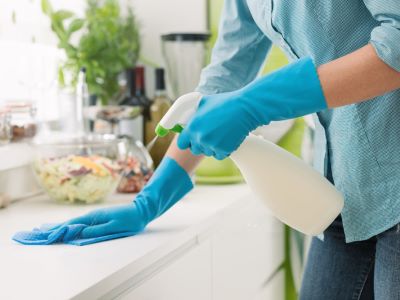
Now, once he is done with his meal, again clean the feeding area, and wash his feeding bowl and cooking utensils. And, if there are any leftovers, keep them in an airtight container and store them again in the fridge. But, if your pup doesnt want to eat it later, then immediately dump it in the trash.
By following these cleaning and sanitising step, you will be able to prevent the bacteria from spreading and reduce the risk of getting ill.
7. Clean Personal Hygiene
Last but not the least, keeping personal hygiene is also important. It not only prevents the spreading of bacteria but keeps you and your furry pal healthy, or disease free. The Centre for Disease Control and Prevention recommend washing hands for 20 seconds before and after the preparation of the food.
So, being a pet parent its good to adapt a habit of washing hands with soap and lukewarm water. It helps to prevent the bacteria from spreading.
Apart from washing hands, its important to clean the surface, food bowl, and cooking utensils properly, and throw away the leftover food. In addition, cleaning your canine companions mouth also prevents the spreading of bacteria.
Additionally, dogs who consume a lot of raw food eliminate pathogens in their faeces, which is not good for human health. So, its advisable to throw away the stool and wash away the floor immediately.
FAQs
How do I prepare raw food for my dog?
Its easy to prepare raw food for dogs UK, all you need to do is follow simple steps. Take the minced meat of your pups choice, select the meat organ, cook it thoroughly to kill the bacteria, and later on mixed it with the minced, and add veggies. Its ready to serve t your furry pal.
Can you feed raw dog food straight from the fridge?
It is not recommended to feed raw food directly from the fridge because raw meat contains harmful bacteria like Salmonella, Listeria, E. coli, etc Cooking raw meat, and veggies at a safe temperature are good for your canine companions health, it kills the bacteria, and reduce the risk of foodborne diseases or other bacterial illness, which your furry pal might encounter.
How long should I freeze raw meat before feeding to dog?
Well, if you buy fresh meat from the butcher, then it is recommended to freeze it for at least three days before feeding it to your canine companion. It should be stored in a good container because this helps prevent the bacteria from spreading.
How do you get rid of bacteria in raw dog food?
The best way to get rid of bacteria in raw dog food is to store it properly. Only keep the portion your pup is going to eat, the rest should be stored in the refrigerator. In addition, it is also important to clean the cooking utensil, and furry pas eating bowls, well with soap and lukewarm water. Also, remember after cooking, clean the surface well with soap and throw away the leftover food.
Can I give my dog raw mince?
Well, yes beef mince is safe for your canine companion, it is more or less dame as raw beef, so you can easily feed them. The mince is rich in protein, zinc, and vitamins B12, B3 and B6, which makes it good raw food to eat for your Fido. It gives the same nutrients benefits as the raw beef gives to your canines body.
Well, Its a Wrap!
Hereby, closing our detailed guideline blog post on: Raw Dog Food: Preparation and Hygiene Guide. Hope, the fundamental guidelines, and the facts will surely help you to correctly feed raw food to your pup and store it properly to avoid the bacterial issue.
Lets quickly recall raw dog food guide!
The hygienic guidelines include regularly washing hands, utensils, and surfaces used for preparing raw meat. It is advisable to use separate cutting boards for meat preparation and store raw meats in the refrigerator until it is required. Further, thaw frozen meats, and discard any leftover food by your furry pal.
While this article has focused on raw meat diets, pet owners should be mindful of food hygiene and storage when preparing vegan dog food too.
By taking these steps, you can ensure that your pup enjoys safe, healthy meals each day without unnecessary risks from contaminated foods
How To Store Raw Dog Food (Rules & Guidelines In Raw Feeding)
Key Takeaways
- To store raw dog food, wrap it securely in an air-tight container and keep it in the freezer. This will ensure that bacteria wont grow in the food.
- Simply thaw the frozen raw pet food and treats in your refrigerator or at room temperature when you need to use it.
- Defrosted raw dog food can last for one to two hours. Leftover raw food thats been in room temperature and left out for more than two hours need to be discarded.
I like raw dog food for many reasons, including food allergies, digestive issues, medical reasons, and enhanced health. Because many dog owners are into raw feeding these days, understanding how to store raw dog food properly is essential. To retain freshness of raw food, keep it sealed in an air-tight container and then freezeits the exact same way you would store raw meat.
As a dog owner, I dont want to do anything that puts my beloved pet at risk. Improper food storage and handling, aside from potentially making my dog sick, can waste my money if the food goes bad.
Taking care to store and feed a biologically appropriate raw pet food diet properly can pay off for a dogs health, and the following food storage tips will help make going raw an easier pursuit for both of owner and canine companion.
The Best Way to Store Raw Dog Food
Simply put, store your pups raw food exactly how you would store food for humans. The same way you would store raw ground beef or uncooked chicken.
Wrap the raw meat securely in sealed, air-tight packaging to keep the food from drying out in the freezer and prevent any juices from leaking onto other foods. The freezers icy temperatures will ensure that your canines raw pet food stays free of growing bacteria.
The good thing about subscribing to the best dog food delivery service brands that offer raw pet meals is that they come in sealed packs and are delivered frozen to maintain freshness. We Feed Raw is one of the most popular dog food subscription brands today that offer premium quality raw diets. These are more convenient options compared to making your own food as raw meals require high quality ingredients that are likely hard to source.
Should You Keep Raw Dog Food Frozen?
To preserve the freshness of your dogs raw food, keep it frozen. When ready to use it, thaw raw pet food and treats in your refrigerator.
Storing raw dog food at temperatures below freezing stops the growth of dangerous microbes on raw meat, including mold and yeast. The arctic temperatures also slow down the enzymes and ripening of any fruits or veggies mixed into your pups frozen meals.
Controlling the temperature range keeps the raw dog food safe. Certain bad bacteria grow at temperatures as low as 46.5 degrees Fahrenheit (8 degrees Celsius). The food might look, smell and taste normal, but the bacteria is still growing.
If you happen to have a freezer malfunction and the food has warmed for more than one to two hours, discard the raw food for the safety and health of your pup.
How Long Does Raw Dog Food Keep in the Fridge?
When you feed a dog raw food, always think about the shelf life of leftovers or other portions. Defrosted raw food, it will stay fresh and safely edible for four to five days in the fridge. If the food has been defrosted outside of the fridge and reached room temperature, it will keep safely for two to three days in the fridge afterward.
According to the U.S. Department of Agriculture, the danger zone for bacteria growth is between 40 and 140 degrees Fahrenheit [1].
Why is this zone dangerous? Because foodborne bacteria grow more quickly in these temps, with some types doubling their numbers within 10 to 20 minutes. The harmful bacteria include Salmonella, Listeria, E. Coli, and Campylobacter.
If you find you have defrosted too much food, you can refreeze the remainder. Place divided food portions into separate packaging, and pop them back into the freezer for later meals. This issue is resolved by raw food deliveries as some of them come in hamburger patties.
Set a Daily Thawing Routine
Feeding raw food thats frozen (thats a tongue-twister!) takes a bit of planning, but once you get a routine going, it becomes a breeze. When you need thawed food to feed your pup, put enough separated portions in the fridge to have food for one to two days.
Keep the food in its wrapper or transfer it to a clean container used only for raw pet food. Wash this container each time you empty it before placing new food in so that no bacteria transfer from one batch of food to another.
You can also defrost the food on the counter for one to two hours, then move it to the refrigerator, or move it directly from the freezer to the fridge if you have more time.
If life happens and you end up in a time crunch, place the frozen food in watertight packaging and run it under lukewarm water until you feel it softening up. You can also immerse the sealed package of food into a tub of cold water.
Once you feel the food has softened enough to cut through it, usually in 20-30 minutes, remove it from the water and place it in the refrigerator until feeding time. Replace the water every 30 minutes or so and continue to soak if the food is still not soft enough to cut off a portion for your poochs meal.
Never use the microwave to defrost your pups raw food. Even though the food might still look raw, some parts heat up enough to become cooked. This process negatively impacts the quality and nutritional content of raw food.
Use Good Food Safety and Handling Techniques
Feed your dog raw food diet is not as time-consuming or complicated as it might seem. Following our guidelines above will avoid any issues that typically come up when feeding this diet.
When you purchase ready-made raw dog food, such as the type that comes in tubes, look for brands that package the food into meal-sized portions and save yourself a little work.
Remember to check expiration dates on the food so that you buy only fresh products with enough time left so that you can store and use them within their best-by dates. Knowing how to store dog food properly helps you avoid wastage. Handling raw dog food properly by practicing sanitary habits is equally important.
Keep these additional food-safety tips in mind:
- Use clean food bowls made of stainless steel if you can because these clean very easily and keep you and your pet safe from foodborne bacteria from raw meat.
- Keep your pups raw dog food well-packaged and separated from other foods.
- If your pup does not finish all of its food, put the remainder in the refrigerator for at most two to three days.
- Wash all surfaces, containers, utensils, and your hands with hot, soapy water after coming into contact with the raw dog food.
FAQs (Frequently Asked Questions)
Should raw dog food be served frozen?
Your pup may have trouble eating frozen food and wont enjoy it as much. Keeping raw food frozen is only done to extend its shelf life. It is best to thaw the food in your refrigerator for at least a few hours before feeding your pooch.
How do you store raw food?
Keep the raw pet food well-packaged in air-tight wrapping. Keep the food frozen and only thaw the portion you will use up within a few days. Keep thawed food in the refrigerator until ready to feed your pup. If your pup does not finish its food, put the remainder in the fridge for up to two days.
How long can raw dog food be left down?
If you are taking the raw food out of the refrigerator, you can leave the meal down for your dog to enjoy for one to two hours. Any unfinished food should be packaged and returned to the fridge. If the raw food has been sitting out for more than two hours, or the foods temperature has reached above 40 degrees Fahrenheit for a few hours, you are better off discarding it to keep your pup safe from foodborne bacteria and illness.
How do you store raw dog food in the freezer?
Divide up your raw dog food into meal-sized portions. Package each separately so that you can defrost them one at a time if needed. Use packaging that is fully sealed, air-tight, and watertight. If you need to thaw some food in a hurry, you can place the sealed package into a bowl of cold water for 20 to 30 minutes until it softens enough to cut up for your pup.

